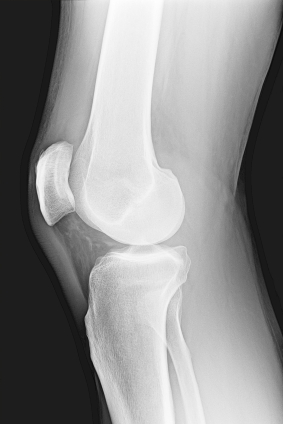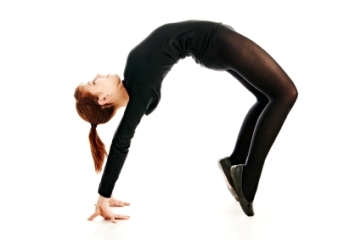There are many factors which impact an athlete's overall performance, including height, weight, eye-hand coordination, explosive power, and endurance. One marker of athletic ability is flexibility, the overall ability to stretch muscles in various directions flawlessly. Flexibility is affected by another factor: joint mobility, or the the looseness of a joint.
Perhaps the most easily understood aspect of joint mobility is "hyper-flexibility," such as the degree to which elbows can bend past straight, a back which bends backwards effortlessly, or ankles that seem to make a full 360 degree motion. Conversely, a very restricted joint is characterized by stiffness, athletes that are very "rigid" in nature.
There is an ideal balance of mobility, but with respect to the knee, the largest and most unstable joint, hypermobility is a major risk factor. A recent meta-analysis of research studies analyzing injuries found that, while looseness in the ankles is not a strong predictor of injury, laxity in the knee suggests increased risk of injury.
So why does this happen? What are the risks associated with knee hypermobility? What can be done to reduce risk?
Knee hypermobility
The knee joint is an odd arrangement of 2 large bones (tibia and femur), a knee cap (patella), 4 major ligaments, 2 menisci, and a variety of other small tissue attachments. Since there is no muscle mass directly over the knee, such as with the shoulder or hip, the knee is very susceptible to injury, particularly among females.

Some young athletes possess a great deal of mobility, commonly the result of increased elastin in the ligaments. These springy cells are very good at allowing increased motion, but too much puts the joint at risk. The knee joint withstands up to 6 times body weight of force while walking, but one small slip up can cause tremendous damage.
Risks associated with hypermobility
The most common risk factor to increased laxity in the knee joint is damage to the anterior cruciate ligament or ACL. Young female athletes in particular, already confounded by increased Q angle at the hips and hormones that promote ligamentous laxity, are at greater risk of non-contact ACL injuries. In addition, looseness in the knee joint causes a combination of rotation and side-to-side movement that places awkward pressure across the menisci.
Common injuries to the knee include:
- ACL, MCL, and Medial Meniscus Tear (commonly known as the "Unhappy Triad");
- Patellar Tendinitis
- Patellofemoral Syndrome
- Osgood Schlatter's
- Bursitis
- IT Band Friction Syndrome
- Retinacular Tear (ligamentous tissue that holds the knee cap in place side to side)
Reducing knee hypermobility
The most important thing a young athlete can do to combat knee hypermobility is to follow an appropriate strength training program, especially one designed to protect the ACL. These programs are designed to improve balance, proprioception (body awareness), and strength around the knee joint. For parents and coaches, adding another training program to a young athlete's regimen means more time and money, but it is well worth it! Not only will such programs reduce the risk of ACL injury, but studies show they also improve performance.
Signs of hypermobility
While an examination by a medical professional such as a doctor, physical therapist, or athletic trainer is the best way to identify an athlete with hypermobility, parents and coaches may be able to spot some of the tell-tale signs by looking for the following:
- When standing, an athlete's knees appear to hyper-extend

- When rocking side to side, the athlete's knees appear to rotate (they should not do much of this)
- The athlete is able to pull their thumb to touch their wrist
- The athlete's elbows hyperextend without pressure
- The athlete can "jump rope" with shoulders while their fingers are interlaced
- The athlete is able to bends backwards like a performer in a Circque de Soleil show.
Source: Hangai, H., Kaneoka, K., Okubo, Y., Miyakawa, S., et al. Relationship Between Low Back Pain and Competitive Sports Activities During Youth. Am. J Sports Med. 2010 (38): 791
Posted September 25, 2012








